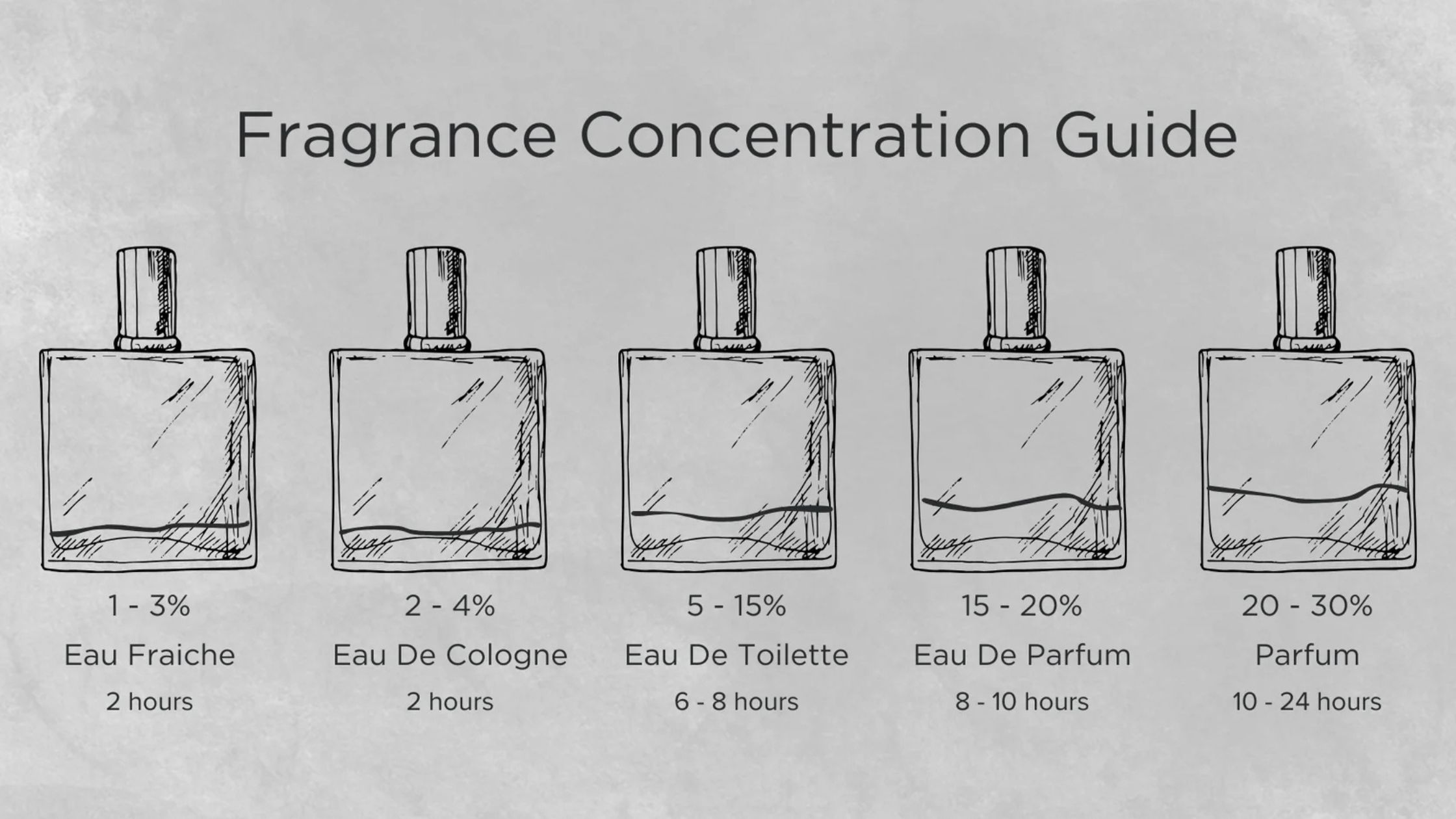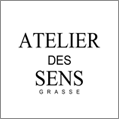The strongest perfume concentrations can keep their scent on your skin for over 12 hours.
Standing at a fragrance counter can feel overwhelming with all those fancy French terms. Parfum, Eau de Toilette, Eau de Cologne – what sets them apart? Perfume concentrations hold the key, determining both a scent’s longevity and its price point.
Many people share this confusion! The world of perfume strength levels seems complex initially, but clarity emerges once you know the basics. Parfum (also called Perfume Extract) leads the pack with 20-30% aromatic oils. The lightest option, Eau Fraîche, contains a mere 1-3%.
Concentration levels affect more than just the price tag – they determine how long your chosen scent stays with you. A true Parfum lingers for 6-8 hours or longer, while an Eau de Cologne fades within 2-3 hours.
This piece will explore each perfume concentration type, explain concentration charts, and guide you toward the ideal fragrance strength for any occasion. Ready to sharpen your fragrance expertise? Let’s delve into the details!
Understanding Perfume Strength Levels
Perfume concentration is the foundation of fragrance strength and how long it lasts. A good understanding of these levels will help you pick your next signature scent with confidence.
What is perfume concentration?
The percentage of aromatic compounds (perfume oils) compared to other ingredients like alcohol and water defines perfume concentration. This percentage shows how “pure” the fragrance really is. Scents become stronger and last longer as the concentration of these aromatic compounds increases.
The packaging of a perfume bottle usually displays terms like “Eau de Parfum” or “Eau de Toilette”. These French terms aren’t just fancy marketing – they tell you the specific concentration levels that determine the scent’s strength, character, and how long it lasts.
How oil percentage affect longevity
Oil concentration and longevity have a simple relationship: scents last longer on your skin with higher percentages of perfume oils. This happens because:
- Oil concentrations take longer to evaporate than alcohol-based components
- Concentrated oils stick better to your skin
- The fragrance releases slowly throughout the day
To cite an instance, a true perfume with 20-30% concentration can last 8-12 hours or more. An Eau Fraîche with just 1-3% concentration might only stay noticeable for 1-2 hours.
Perfume concentration chart overview
The standard hierarchy of perfume strengths based on oil concentration percentages includes:
- Parfum/Extrait de Parfum: 20-30% concentration, lasts 6-8 hours or more
- Eau de Parfum (EDP): 15-20% concentration, lasts 5-6 hours
- Eau de Toilette (EDT): 5-15% concentration, lasts 4-5 hours
- Eau de Cologne (EDC): 2-5% concentration, lasts 2-3 hours
- Eau Fraîche: 1-3% concentration, lasts 1-2 hours
Speciality categories like perfume oils contain no alcohol or water. These oil-based fragrances often have concentrations that exceed 30%. This is a big deal as it means that they last much longer because they evaporate more slowly and stick better to your skin.
The concentration affects both the scent’s longevity and its price point. Higher concentrations usually cost more because of their greater purity and lasting power.
Types of Perfume Concentration Explained
Let’s dive into each fragrance concentration category to understand what makes them unique.
Parfum (20-30%)
Parfum sits at the top of perfume concentrations with 20-30% aromatic compounds. Also known as Perfume Extract, this luxurious concentration creates a rich and powerful experience. Your skin will hold this scent for a full day, which makes it perfect for special occasions. You should use much of either on pulse points – wrists, neck, and behind ears. The premium quality of Parfum explains why it’s the most expensive in any perfume line.
Eau de Parfum (15-20%)
Eau de Parfum (EDP) hits the sweet spot between intensity and everyday wear with 15-20% aromatic compounds. The scent lasts 4-6 hours, though some say it can go up to 8 hours. EDPs cost less than Parfums but still last impressively long. The higher alcohol content compared to Parfum doesn’t stop it from being gentle on sensitive skin.
Eau de Toilette (5-15%)
Eau de Toilette (EDT) gives you a lighter fragrance with 5-15% concentration. The scent works great for daytime or warm weather and stays for 2-4 hours. You might need to reapply it occasionally. EDTs cost less than EDPs or Parfums, making them popular for everyday use.
Eau de Cologne (2-5%)
Eau de Cologne (EDC) keeps things light with just 2-5% aromatic compounds. People first used it as a tonic or aftershave, but modern EDCs feature citrus, herbal, and floral notes. The scent stays for 1-2 hours and works best as a quick pick-me-up. You’ll often find EDCs in bigger bottles since you need to apply them more often.
Eau Fraiche (1-3%)
Eau Fraiche is the lightest option with only 1-3% aromatic compounds. It’s mostly water with a touch of essential oils. The subtle, quick-fading scent works well for people who like gentle fragrances or live in hot places. “Eau Fraiche” means “fresh water” in French and serves as a quick refresher.
Perfume Oils and Attars
Attars stand out with their 15-30% concentration mixed in base oils like sandalwood or jojoba. Unlike regular perfumes, attars are pure perfume oil. These concentrated oils can keep you smelling great for 24 hours, especially the oud-based ones. Middle Eastern and South Asian cultures use attars both as personal fragrance and for religious purposes.
How to Choose the Right Perfume for You
Picking the right perfume concentration goes beyond knowing different types—it’s about finding what works best for your unique needs and priorities.
Match concentration to your lifestyle
Your daily routine should shape your perfume choice. Eau de Toilette works well in professional settings without overwhelming your colleagues. Eau de Parfum might suit you better if you often attend evening events, as it lasts 5-6 hours. People with packed schedules who can’t reapply perfume throughout the day might lean toward higher concentrations like Parfum.
Think over your skin type and climate
Your skin chemistry greatly affects how fragrances perform. Scents usually last longer on oily skin, while they fade faster on dry skin, making higher concentrations necessary. The climate also plays a vital role. Lighter concentrations with fresh notes work best in hot, humid environments. Cold weather calls for warmer scents like amber or vanilla in stronger concentrations.
Day vs night wear
Light and inviting fragrances work best during the day:
- Morning: Citrus, green, or light floral notes shine
- Work/Office: Fresh scents keep the atmosphere pleasant in close quarters
Nighttime allows you to wear deeper, more sensual perfumes with higher oil concentrations. Amber, sandalwood, vanilla, or spicy notes develop beautifully when temperatures drop.
Fragrance layering tips
Layering helps create your signature scent. Start with scented lotion as your base. Apply stronger fragrances first, then add lighter ones. You’ll get the best results when you mix scents that share common notes or have complementary profiles.
Fragrance Notes and Their Role
The art of perfumery creates a symphony of scent that evolves over time through its well-laid-out composition. Different notes blend together in perfect harmony.
Top, middle, and base notes explained
A perfume’s structure follows an olfactory pyramid with three distinct layers. Light, volatile molecules like citrus and herbs create the first impression as top notes, which last only 15-30 minutes. The fragrance’s identity emerges through heart (middle) notes that appear as top notes fade and last 2-5 hours. Base notes are the fragrance’s soul. They appear last but stay the longest—up to 24 hours.
How notes interact with concentration
Aromatic molecules release slowly in higher perfume concentrations. The fragrance’s true character emerges when concentrated formulations allow heavy base notes to develop fully. Parfum with 20-30% concentration shows off rich base notes beautifully, while lighter concentrations highlight the fleeting top notes.
Why some scents last longer than others
We determined that molecular weight drives longevity—heavier molecules take longer to evaporate. Woody notes like sandalwood and cedar, along with resins, musks, and amber, stay exceptionally long. A person’s skin type affects how long a scent lasts. Oily skin retains fragrance better than dry skin. Premium perfumes use fixatives—natural oils, resins, and synthetic compounds—that slow down evaporation rates and enhance longevity.
Conclusion
Knowing perfume concentrations can revolutionise your fragrance experience. This piece explores how these concentrations shape everything from scent longevity to price point. Of course, a Parfum that lasts 12+ hours compared to an Eau Fraîche that fades after just 1-2 hours will affect your satisfaction greatly.
You’ll make smarter purchases when you know these differences. Your skin type, daily activities, and the climate where you live are vital factors that determine which concentration works best. Someone with dry skin who lives in a hot climate might prioritise an Eau de Parfum over a lighter concentration that evaporates quickly.
A fragrance reveals its true character from first application to final dry-down. Bright top notes appear first, heart notes emerge next, and base notes stay on your skin last. Higher concentrations let you experience this complete development, especially when you have rich base notes that define a fragrance’s essence.
Your specific needs determine the perfect fragrance strength. You don’t need to stick to just one concentration. Many fragrance lovers keep different strengths for various occasions – maybe even an Eau de Toilette for everyday wear and a luxurious Parfum for special evenings.
This knowledge about perfume concentrations helps you direct yourself through fragrance counters and make choices that match your priorities and lifestyle. You’ll understand those fancy French terms when you shop for your signature scent next time!
FAQs
What are the main types of perfume concentrations? There are five main types of perfume concentrations: Parfum (20-30%), Eau de Parfum (15-20%), Eau de Toilette (5-15%), Eau de Cologne (2-5%), and Eau Fraiche (1-3%). Each concentration affects the fragrance’s strength and longevity.
How long does each perfume concentration typically last? The longevity varies by concentration. Parfum can last 6-8 hours or more, Eau de Parfum lasts about 5-6 hours, Eau de Toilette lasts 4-5 hours, Eau de Cologne lasts 2-3 hours, and Eau Fraiche typically lasts 1-2 hours.
What factors should I consider when choosing a perfume concentration? Consider your lifestyle, skin type, climate, and the occasion. For example, oily skin holds scents longer, while dry skin may require higher concentrations. Also, consider whether you need a fragrance for day or night wear.
How do fragrance notes relate to perfume concentration? Higher concentrations allow for a fuller development of all fragrance notes, especially the base notes. Top notes are more prominent in lighter concentrations, while base notes shine in higher concentrations, like Parfum.
Can I layer different perfume concentrations? Yes, you can layer fragrances to create a unique scent. Start with a scented lotion as a base, then apply stronger fragrances first, followed by lighter ones. For best results, combine scents with common notes or complementary profiles.




